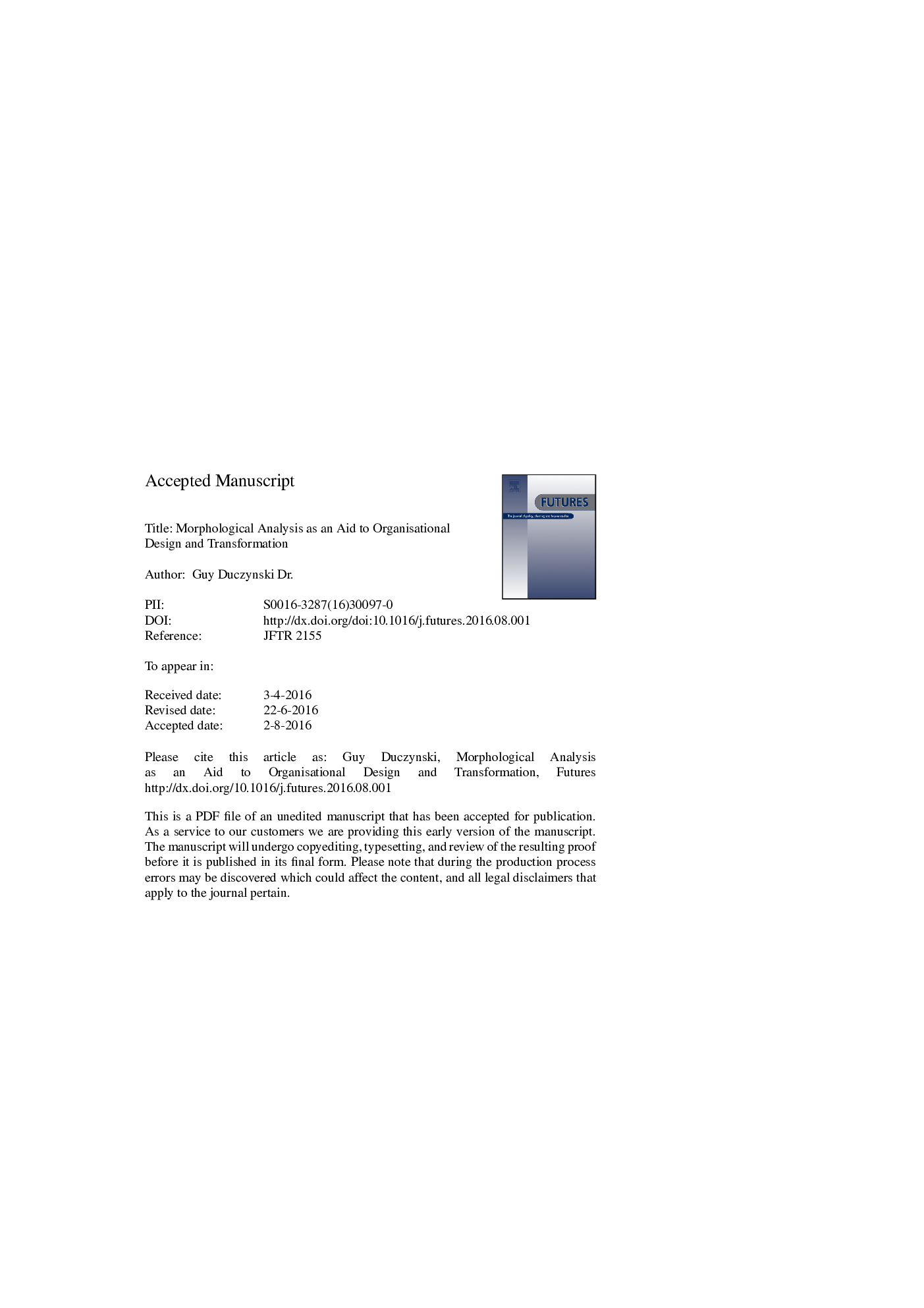| Article ID | Journal | Published Year | Pages | File Type |
|---|---|---|---|---|
| 5109150 | Futures | 2017 | 18 Pages |
Abstract
Despite a strong desire for an organisational design that aligns with the operational environment and is sustainable, many institutions suffer from the combined effects of systemic factors and other elements associated with rigidity and resistance to change. These factors conspire in unusual ways to delay and hinder those important developments that represent the critical transformation to effect meaningful change. These have become known as 'wicked, messy' problems and must be attended to with alternate planning approaches. This paper presents the use of General Morphological Analysis as a method to identify, investigate and successfully manage those systemic factors within a broader effort aimed at resetting the conditions. The research centred on Australian government support to a major nation in the South Pacific and its efforts to establish and maintain security and law enforcement capabilities alongside other nation building endeavours. The organisational design analysis exposed the principal factors that were central to achievements and detailed their associated conditions; it allowed precise specification of the current conditions; it contrasted these with the desired conditions; and it enabled planners to map a series of achievable changes to get from 'here' to 'there'. Several 'tipping' points were also revealed that encouraged planners to sequence their efforts and set the pre-conditions for more ambitious undertakings.
Keywords
Related Topics
Social Sciences and Humanities
Business, Management and Accounting
Business and International Management
Authors
Guy (Dr.),
